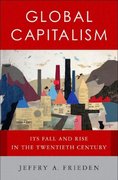Question
1. According to Peter Heather, a historian at the University of Oxford, during the Roman Empire, the German tribes east of the Rhine River produced
1. According to Peter Heather, a historian at the University of Oxford, during the Roman Empire, the German tribes east of the Rhine River produced no coins of their own but used Roman coins instead:
"Although no coinage was produced in Germania, Roman coins were in plentiful circulation and could easily have provided a medium of exchange (already in the first century, Tacitus tells us, Germani of the Rhine region were using good-quality Roman silver coins for this purpose)"
*Peter Heather, The Fall of the Roman Empire: A New History of Rome and the Barbarians, Oxford University Press, 2006, p.89
(A) What does the author mean when he writes that roman coins could have provided the German tribes with a medium of exchange? (5 pts)
(B) Why would any member of a German tribe have been willing to accept a Roman coin from another member of the tribe in exchange for goods or services when the tribes were not part of the Roman Empire and were not governed by Roman law? Explain. (5 pts)
2. Consider the following:
In the late 1940s, the Communists under Mao Zedong were defeating the government of China in a civil war. The paper currency issued by the Chinese government ( a fiat money) was losing much of its value and most businesses refused to accept it. At the same time, there was a paper shortage in Japan.During these years, Japan was still under military occupation by the United States, following its defeat in World War II. Some of the US troops in Japan realized that they could use dollars to buy up vast amounts of paper currency in China, ship it to Japan to be recycled into paper, and make a substantial profit.
Use this information to answer the following question:
(A) Which of the functions of money were compromised for the Chinese currency at the time?Explain. (5 pts)
(B) In what sense was the Chinese currency both a commodity and fiat money in this situation?Explain. (5 pts)
3. Why can the fed not "target" independent money supply levels and interest rates simultaneously? Explain. (5 pts)
4. Consider the following excerpt from the Wall Street Journal:
"In February... [Japan's] gauge of core consumer prices slipped 0.1% from a year earlier .... The Bank of Japan said last year it would regard prices as stable if they rose from zero to 2% a year .... The Bank of Japan's target for short -term interest rates is just 0.5%....'It will be very difficult for the BOJ [Bank of Japan] to raise interest rates when prices are below the range it defines as stable', says Teizo Taya, special counselor the Daiwa Institute of Research and a former BOJ policy board member"
* Yuka Hayashi, "Japan's Consumer Prices May Threaten Economy", WSJ, 4/25/2007
(A) Why would the BOJ be reluctant to raise its target for short-term interest rates if the price level is falling? Use AD/AS analysis to frame your answer. (5 pts)
Step by Step Solution
There are 3 Steps involved in it
Step: 1

Get Instant Access to Expert-Tailored Solutions
See step-by-step solutions with expert insights and AI powered tools for academic success
Step: 2

Step: 3

Ace Your Homework with AI
Get the answers you need in no time with our AI-driven, step-by-step assistance
Get Started


